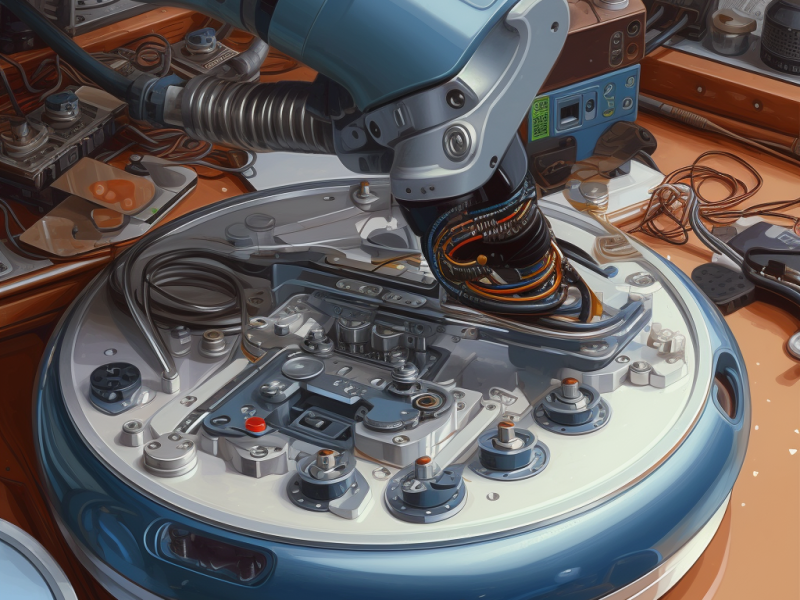Introduction
Automation and robotics are revolutionizing the way we work, bringing about significant changes in various industries. Two key areas of advancement are the adoption of collaborative robots (cobots) and robotic process automation (RPA). These technologies are transforming the workplace, enhancing efficiency, and enabling humans and machines to work together seamlessly. As we move towards a more automated future, it is essential to understand the impact and potential of these technologies.
Collaborative Robots (Cobots)
Collaborative robots, or cobots, are designed to work alongside human workers, sharing the same workspace and collaborating on tasks. Unlike traditional industrial robots that operate in isolation, cobots are equipped with safety features that allow them to interact with humans without the need for protective barriers. This collaboration between humans and machines is reshaping the manufacturing landscape and creating new opportunities for innovation.
The adoption of cobots offers several benefits:
- Increased Productivity: Cobots can work tirelessly, performing repetitive tasks with high precision and consistency, allowing human workers to focus on more complex and creative tasks. This division of labor optimizes the strengths of both humans and machines, leading to increased overall productivity.
- Flexibility: Cobots are easily programmable and can be quickly adapted to perform different tasks, making them suitable for small-batch production and frequent changeovers. This flexibility enables manufacturers to respond rapidly to changing market demands and customer preferences.
- Ergonomic Improvements: By taking over physically demanding or repetitive tasks, cobots can reduce the risk of work-related injuries and improve ergonomics for human workers. This not only enhances worker well-being but also reduces the costs associated with workplace injuries and absenteeism.
- Cost-Effectiveness: Cobots are generally more affordable than traditional industrial robots and have a faster return on investment due to their flexibility and ease of integration into existing workflows. Small and medium-sized enterprises can now leverage the benefits of automation without the need for significant capital investments.
Robotic Process Automation (RPA)
Robotic Process Automation (RPA) is a technology that enables the automation of repetitive and rule-based tasks through software robots or “bots.” These bots can mimic human actions, such as data entry, form filling, and file processing, without the need for human intervention. RPA is transforming the way organizations handle back-office processes, customer service, and data management.
The benefits of RPA include:
- Increased Efficiency: RPA bots can work 24/7 without breaks, completing tasks faster and with higher accuracy than human workers, leading to improved efficiency and productivity. This allows organizations to process larger volumes of work in shorter timeframes, reducing backlogs and improving customer satisfaction.
- Cost Reduction: By automating repetitive tasks, organizations can reduce labor costs and redeploy human resources to higher-value activities. RPA enables companies to optimize their workforce, focusing on tasks that require human judgment, creativity, and problem-solving skills.
- Scalability: RPA bots can be easily scaled up or down depending on the workload, allowing organizations to adapt to changing business needs. This scalability enables companies to handle peak demands without the need for additional hiring or training.
- Improved Compliance: RPA ensures that tasks are performed consistently and in compliance with predefined rules and regulations, reducing the risk of human error and enhancing compliance. This is particularly important in industries with strict regulatory requirements, such as finance and healthcare.
Future Outlook
As automation and robotics technologies continue to advance, we can expect to see an increasing number of applications across various industries. Some future trends and developments include:
- Artificial Intelligence Integration: The integration of artificial intelligence (AI) with cobots and RPA will enable more sophisticated and adaptive automation. AI-powered robots will be able to learn from their interactions with humans and the environment, improving their performance over time.
- Expansion Beyond Manufacturing: While automation and robotics have been primarily associated with the manufacturing sector, we can expect to see increased adoption in other industries, such as healthcare, retail, and agriculture. Cobots and RPA will be used to streamline processes, improve patient care, enhance customer experiences, and optimize crop management.
- Reskilling and Upskilling: As automation takes over certain tasks, there will be a growing need for reskilling and upskilling the workforce. Organizations will need to invest in training programs to help employees acquire the necessary skills to work alongside robots and adapt to new roles.
- Collaborative Workspaces: The rise of cobots will lead to the redesign of workspaces to facilitate human-robot collaboration. Ergonomic considerations and safety features will be integrated into the design of collaborative workspaces to ensure a seamless and safe working environment.
Conclusion
The adoption of collaborative robots and robotic process automation is transforming the workplace, bringing about significant improvements in productivity, flexibility, and cost-effectiveness. As these technologies continue to advance, we can expect to see an increasing number of organizations embracing automation and robotics to remain competitive in the ever-evolving business landscape.
However, it is crucial to approach automation and robotics with a human-centric perspective. The goal should be to augment human capabilities rather than replace human workers entirely. By leveraging the strengths of both humans and machines, organizations can create a more efficient and agile workforce, enabling them to tackle complex challenges and drive innovation in their respective industries.
As we move forward, it is essential for organizations to invest in the development of their workforce, providing them with the necessary skills and knowledge to thrive in an automated world. By embracing automation and robotics while prioritizing human well-being and growth, we can create a future where humans and machines work together in harmony, unlocking new possibilities and driving progress across all sectors of society. Ready to embrace the future of automation and robotics? Contact us today to learn how our solutions can transform your workplace and drive your business forward.

